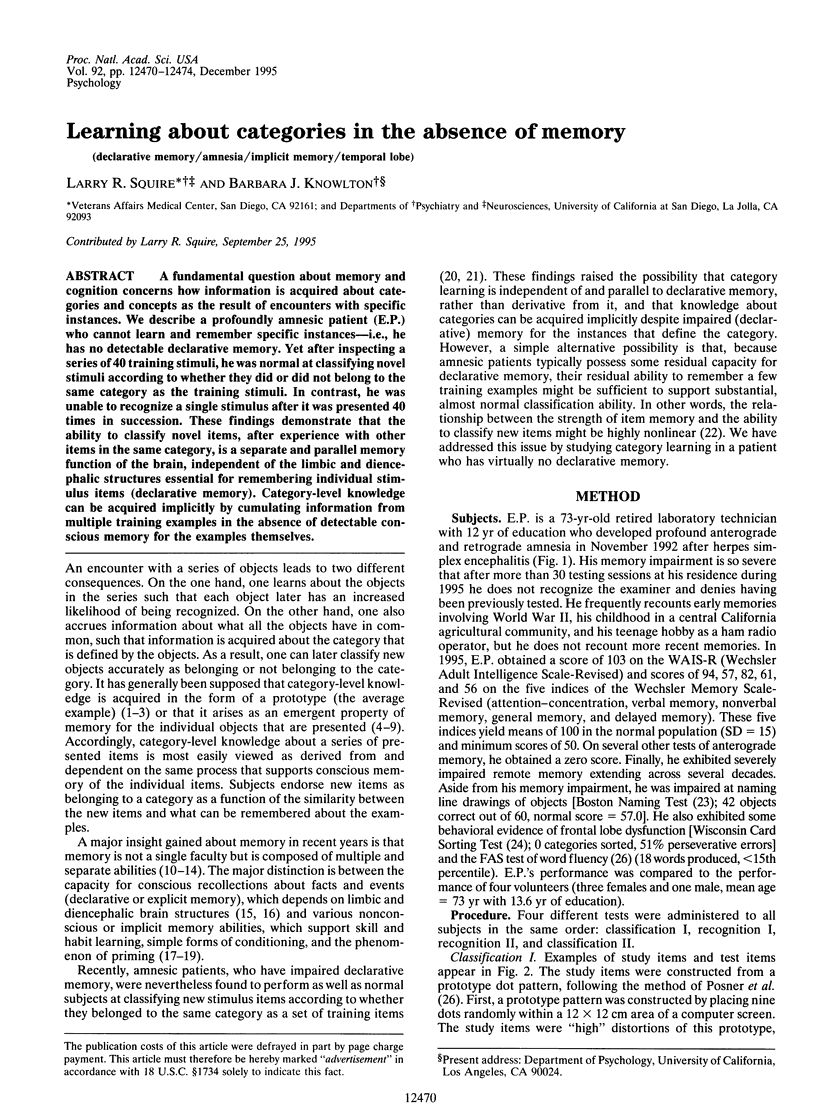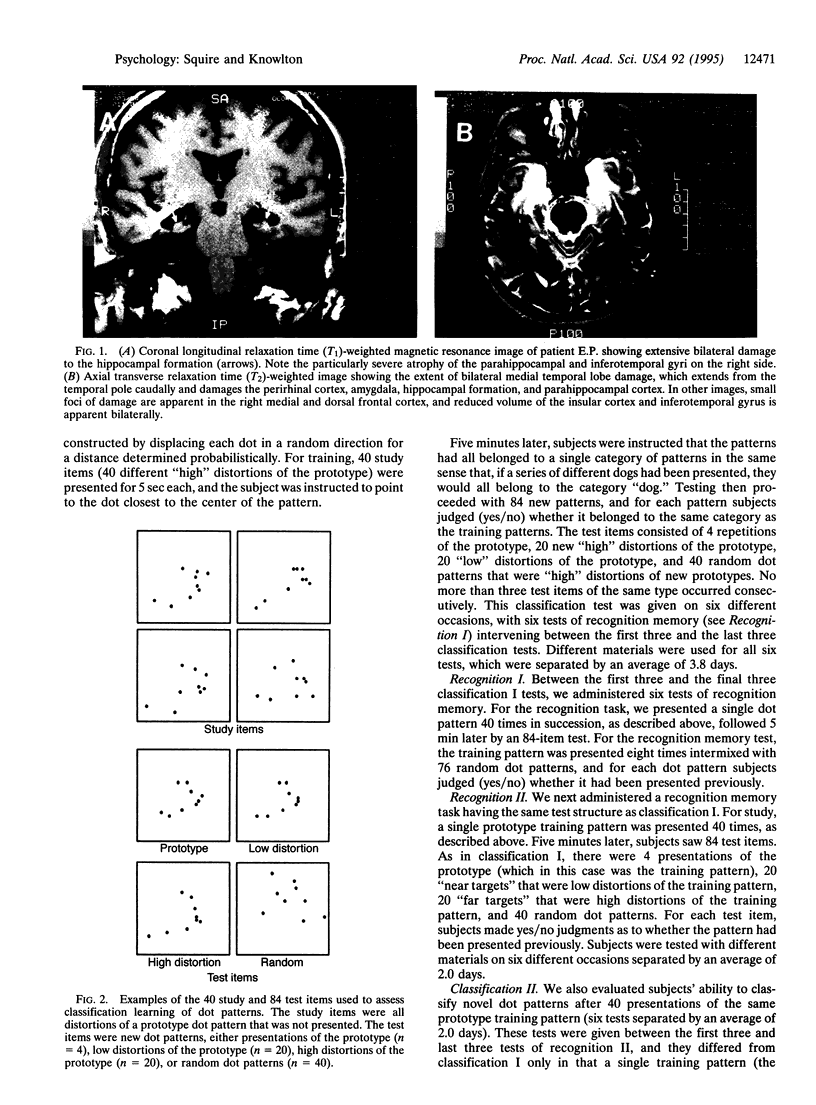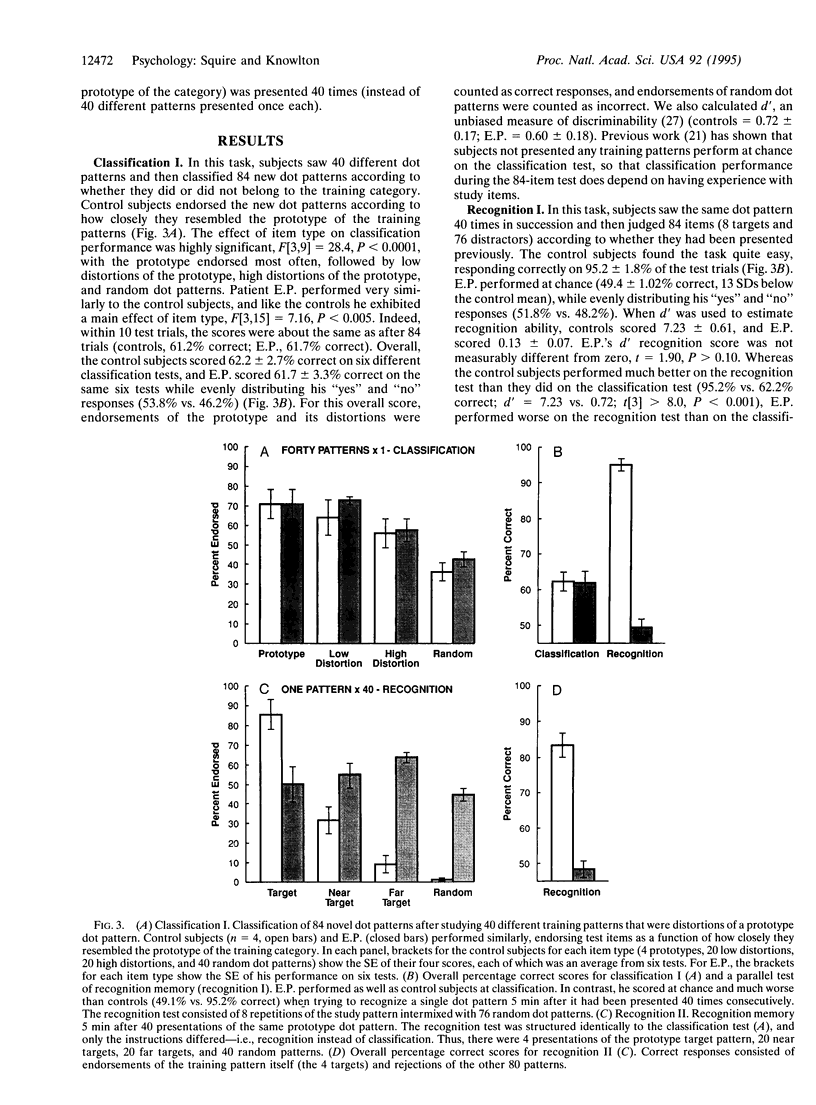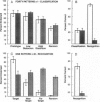Abstract
A fundamental question about memory and cognition concerns how information is acquired about categories and concepts as the result of encounters with specific instances. We describe a profoundly amnesic patient (E.P.) who cannot learn and remember specific instances--i.e., he has no detectable declarative memory. Yet after inspecting a series of 40 training stimuli, he was normal at classifying novel stimuli according to whether they did or did not belong to the same category as the training stimuli. In contrast, he was unable to recognize a single stimulus after it was presented 40 times in succession. These findings demonstrate that the ability to classify novel items, after experience with other items in the same category, is a separate and parallel memory function of the brain, independent of the limbic and diencephalic structures essential for remembering individual stimulus items (declarative memory). Category-level knowledge can be acquired implicitly by cumulating information from multiple training examples in the absence of detectable conscious memory for the examples themselves.
Full text
PDF




Images in this article
Selected References
These references are in PubMed. This may not be the complete list of references from this article.
- Knowlton B. J., Squire L. R. The learning of categories: parallel brain systems for item memory and category knowledge. Science. 1993 Dec 10;262(5140):1747–1749. doi: 10.1126/science.8259522. [DOI] [PubMed] [Google Scholar]
- Mishkin M., Murray E. A. Stimulus recognition. Curr Opin Neurobiol. 1994 Apr;4(2):200–206. doi: 10.1016/0959-4388(94)90073-6. [DOI] [PubMed] [Google Scholar]
- Nosofsky R. M., Kruschke J. K., McKinley S. C. Combining exemplar-based category representations and connectionist learning rules. J Exp Psychol Learn Mem Cogn. 1992 Mar;18(2):211–233. doi: 10.1037//0278-7393.18.2.211. [DOI] [PubMed] [Google Scholar]
- Posner M. I., Goldsmith R., Welton K. E., Jr Perceived distance and the classification of distorted patterns. J Exp Psychol. 1967 Jan;73(1):28–38. doi: 10.1037/h0024135. [DOI] [PubMed] [Google Scholar]
- Posner M. I., Keele S. W. On the genesis of abstract ideas. J Exp Psychol. 1968 Jul;77(3):353–363. doi: 10.1037/h0025953. [DOI] [PubMed] [Google Scholar]
- Schacter D. L., Chiu C. Y., Ochsner K. N. Implicit memory: a selective review. Annu Rev Neurosci. 1993;16:159–182. doi: 10.1146/annurev.ne.16.030193.001111. [DOI] [PubMed] [Google Scholar]
- Squire L. R., Knowlton B., Musen G. The structure and organization of memory. Annu Rev Psychol. 1993;44:453–495. doi: 10.1146/annurev.ps.44.020193.002321. [DOI] [PubMed] [Google Scholar]
- Squire L. R. Memory and the hippocampus: a synthesis from findings with rats, monkeys, and humans. Psychol Rev. 1992 Apr;99(2):195–231. doi: 10.1037/0033-295x.99.2.195. [DOI] [PubMed] [Google Scholar]
- Squire L. R. The neuropsychology of human memory. Annu Rev Neurosci. 1982;5:241–273. doi: 10.1146/annurev.ne.05.030182.001325. [DOI] [PubMed] [Google Scholar]
- Squire L. R., Zola-Morgan S. The medial temporal lobe memory system. Science. 1991 Sep 20;253(5026):1380–1386. doi: 10.1126/science.1896849. [DOI] [PubMed] [Google Scholar]
- Weiskrantz L. Neuroanatomy of memory and amnesia: a case for multiple memory systems. Hum Neurobiol. 1987;6(2):93–105. [PubMed] [Google Scholar]




